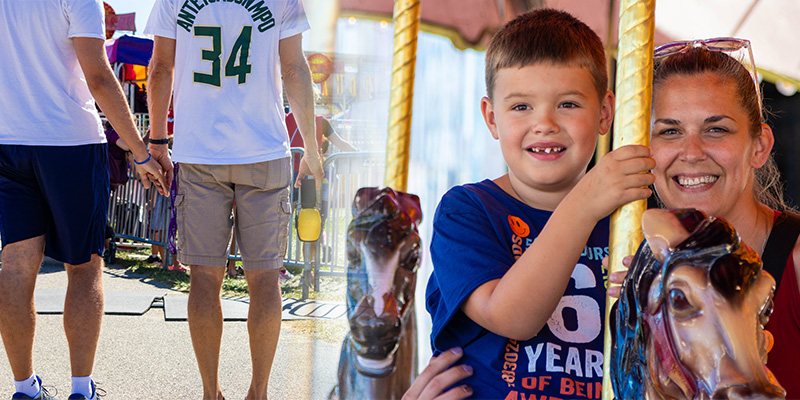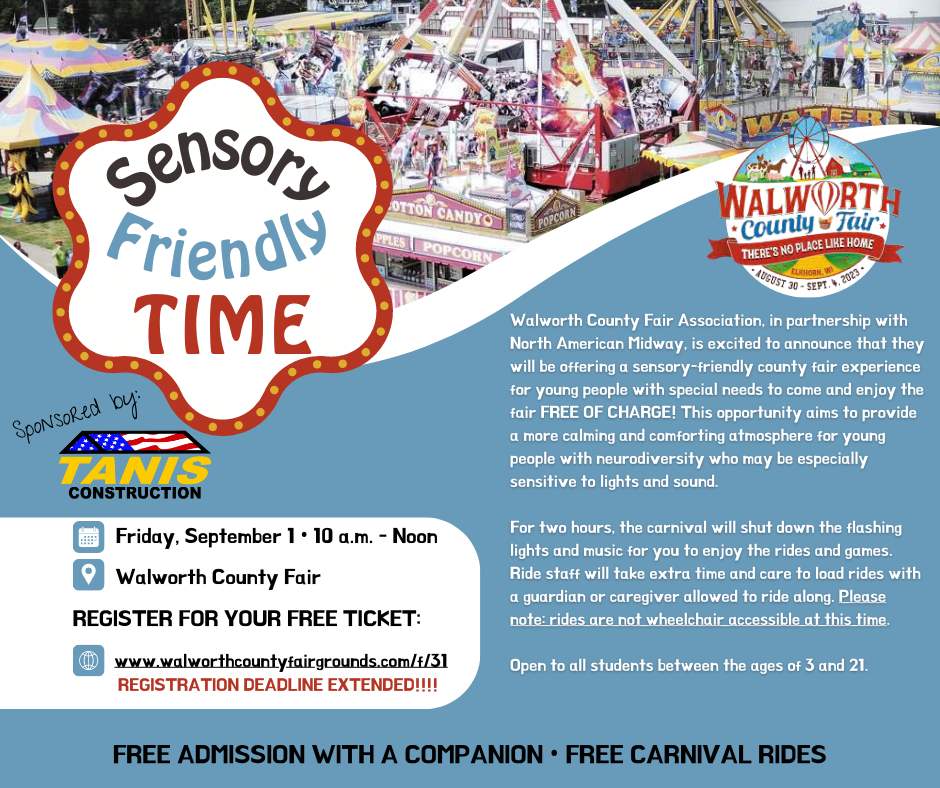How to Make Your Community Event Even More Accessible
What is Sensory-Friendly?
Sensory difficulties refer to challenges in processing and responding to sensory information, which can significantly impact an individual’s daily life. According to the CDC, approximately 1 in 6 children in the United States have been diagnosed with a sensory processing disorder of one form or another.
Sensory difficulties can vary widely in severity. Ranging from mild, where a person might find textures uncomfortable, to severe, where they find everyday noises or lights overwhelming.

What Conditions Make an Event Sensory-Friendly?
Creating a sensory-friendly event or area involves making considerations to ensure the environment is less overwhelming and stimulating, especially for individuals with sensory sensitivities such as those with Autism Spectrum Disorder (ASD).
Here are some conditions that contribute to making an event or area sensory-friendly:
1. Reduced Sensory Stimuli
- Sound: Control the level of noise and possibly provide noise-canceling headphones
- Touch: Be mindful of textures in the environment, both in decor and seating arrangements
- Smell: Avoid strong odors or fragrances
- Taste: Offer a variety of food options to cater to different sensitivities
- Sight: Use soft lighting and avoid flashy or bright lights
2. Designated Quiet Areas
Having a quiet area provides a retreat for individuals who might find the sensory stimulation at the event overwhelming. The Madison Children’s Museum outlines their quiet areas during their frequent sensory-friendly days.
3. Provide of Sensory Toys/Activities
Sensory toys or activities can help individuals with sensory sensitivities self-regulate and stay engaged in the event.
4. Supportive Environment
- Allow Support Staff to Join for Free: If an attendee requires a support person, allowing the support staff to attend for free can make the event more accessible.
- Provide Social Stories: Social stories can help attendees understand what to expect at the event, which can be particularly helpful for individuals with autism or sensory sensitivities. Here’s a great example from the Kennedy Center in Washington DC.
5. Feedback Mechanism
Asking for feedback after the event can provide insights on how to make future events more sensory-friendly and inclusive.
The Pennsylvania organization of Autism Services, Education, Resources, and Training Collaborative (ASERT) has an incredible resource page to help provide insight.
Walworth County Fair’s Sensory-Friendly Midway
Walworth County hosts one of the largest county fairs in Wisconsin. In 2023, a new event was added, a sensory-friendly midway experience. Midways are known for dazzling lights, loud music, and thrilling rides. How can sensory-friendly happen?
Larry Gaffey, General Manager of the Walworth County Fairgrounds, said, “A friend of the fair noticed an article about the Brown County Fair doing something similar. We started researching ways to accommodate children with special needs and contacted Lakeland School in Elkhorn. The project took off from there.”

“We wanted to create a time period during the fair where everyone was mindful of those conditions,” said Gaffey.
To ensure the experience remains as inclusive as possible, Gaffey says, “the carnival company shut off all music and sound effects along with all of the lights. They also took more time to load and unload the rides.”
For the first season, the response was surprising. “Considering this is our first year, we were very pleased that nearly 1,000 registered,” said Gaffey.
Bringing a Sensory-Friendly Experience to Your Event
With all of the additional considerations, a lot of event planners may hesitate.
“Don’t be afraid of the expense,” urges Gaffey. “When we announced this program community business leaders reached out to us to see what they could do to help.”
Businesses and volunteers will come forward to help in surprising numbers. “They will jump at the chance to contribute their time and talent!” says Gaffey.Some Tips for Getting it Planned Right
Partner with Local Organizations
Many families with a member that is sensory sensitive are active with local organizations or support groups. Connect with them—they frequently can help spread the word.
Advertise Specifically for the Sensory-Friendly Time
Don’t lump the sensory friendly event features in with your general marketing. Create separate ads, social posts, and collateral. This will allow you to target your digital marketing, but also get the attention of families and caregivers who are looking for activities.
Create Content Explaining What Sensory-Friendly Is
While Autism Spectrum Disorder (ASD) has significantly grown in awareness, not everyone is aware what sensory-friendly means. Some additional information and/or resources will go a long way. Don’t forget to reach out to local media, too. News outlets have been fantastic at helping build awareness.
The journey from understanding sensory difficulties to actually implementing measures to accommodate individuals with sensory sensitivities is a rewarding endeavor that not only enriches your event but also educates the community.
As a destination, embracing the sensory-friendly approach is an opportunity to foster a deeper connection within the community and create memorable experiences for guests. Take the initiative today; reach out to local organizations, engage with the community, and start planning your sensory-friendly event. Your actions today can create a ripple effect, encouraging others to follow suit, making community events enjoyable and accessible for everyone.